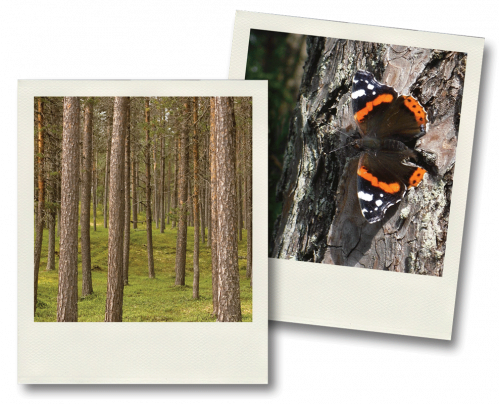The pine that has grown in the harsh landscape of Lapland is an ideal building material. Trees grow very slowly in harsh environments. The short growing season produces a dense, even structure where the resin flows in narrow ducts. The conditions give the wood an ideal protection, a strong resistance and durability.
The pines from Lapland that we at Artichouse qualify to our production meet all of our quality standards that guarantee a long-lived log building. Polar pine is a first class building material. It is durable, extremely workable, beautiful and strong.
Polar pine is stronger than southern pine
The tensile strength, which is measured by pulling the wood fiber from the opposite direction, reduces the wood material’s susceptibility to cracking and improves joint durability, and is much greater with the polar pine than its southern counterpart. Also, the surface hardness of the polar pine in relation to the density of the timber is greater than that of the southern pine.
There are also other factors that affect wood density. Even though wood density is small in the north, the lumber made from polar pine is stronger than its southern counterpart because of its straight wood fiber and smaller branches, among other factors. Extra strong varieties are also available, more so than with any other types of coniferous trees.

The advantages of polar pine
- Sturdy wood: great bending strength, compression strength, cutting strength and tensile strength
- Light but durable: very light and strong compared to its weight.
- Even strength division: narrow growth rings and little variation, little juvenile wood
- Less cracking: large tensile strength when pulling the wood fiber from the opposite direction, large amount of heartwood
Even quality
The growth in length and diameter are significantly slow and the branches remain small. As for the use of wood material, this can be seen in low priced thin growth rings, thanks to which the wood is less prone to tears and cracks when worked. Also, the amount of young wood that is harmful to workability is sparse compared to most coniferous tree types and the southern pine.
The width of the polar pine’s growth rings changes less from the core to the surface than that of the southern pine. Also, the density of the wood material changes less within a single trunk than in the southern pine. The density directly affects several other qualities, such as strength, so the polar pine’s wood material is in many respects more of uniform quality than the southern pine.
The gluing and finishing (paint, varnish, wax) of the polar pine is easy as long as the pieces do not have too many parts or resin. The gluing is durable and the finishing guarantees an even surface.

A beautiful and strong heart wood
Due to slow thickness growth, same sized pine trunks in the north have more growth rings than in the south. When they reach a certain width, the polar pines are older and have relatively more heartwood which has many good qualities.
Heartwood is generally darker and more saturated than sapwood. In the north, the difference in color between heartwood and sapwood is at first quite big, but over time it evens out as the color of the wood gets darker, mainly because of UV – radiation. The even coloring of the wood material, on the other hand, is due to the narrowness of the growth rings. With larger surfaces, a balanced appearance is also affected by the smaller size, roundness and even positioning of the branches. Visually disturbing resin cracks or leaks seldom occur.
Wood that keeps its shape
The advantage of polar pine is that as it grows slowly for a coniferous tree, not much juvenile wood is produced; the juvenile wood close to the core has qualities that are in many ways inferior to other wood material. A large portion of heartwood is a positive attribute, for due to a smaller rate of moisture absorption, units manufactured from heartwood change less in size as a result of air moisture change than those manufactured from surface wood.
